Warum lohnt es sich, WebP für CS-Cart zu verwenden?
Die Verwendung von Webp löst das Problem "Bilder in Formaten der nächsten Generation bereitstellen" in Google Pagespeed Insights.
Kurz gesagt, WebP komprimiert die Datei unter sonst gleichen Bedingungen besser als ältere Formate (png und jpeg) - was bedeutet, dass es weniger Platz auf dem Hosting benötigt und beim Anzeigen der Seite im Browser schneller geladen wird.
p>
Die Implementierung von WebP wird von Google aktiv gefördert - sie liefern solche Statistiken:
- WebP komprimiert Bilder verlustfrei um 26 % besser als PNG.
- WebP komprimiert verlustbehaftete Bilder um 25-34% besser als JPEG bei gleichem strukturellen Ähnlichkeitsindex (SSIM)
- WebP unterstützt verlustfreie Transparenz (bekannt als Alpha) mit einer Größenzunahme von nur 22 %.
Wenn der Browser des Besuchers WebP nicht unterstützt, gibt das CDN das alte Format (png / jpeg) zurück, aber komprimiert (optimiert für das Web)
Was ist Bildkomprimierung
Bildoptimierung ist die spezielle Verarbeitung einer Grafikdatei, um ihre Größe ohne Verlust der visuellen Qualität zu minimieren.
Um dieses Verfahren durchzuführen, gibt es eine große Anzahl ziemlich komplexer Algorithmen. Sie basieren jedoch alle auf der gleichen Grundlage - alle dortigen Servicedaten (z. glätten Sie ähnliche Farben.
Als Ergebnis erhalten wir das gleiche Bild, das sich optisch nicht verändert hat. Das Volumen (Gewicht) dieser Datei in Bytes ist jedoch viel geringer als das Original. Wenn diese Verarbeitung korrekt durchgeführt wird, kann die Bilddatei auf 98% reduziert werden, ohne dass die Bildqualität verloren geht.
Das bedeutet, dass die Bilder auf den Seiten der Site nach der Optimierung um ein Vielfaches schneller geladen werden.
Was optimiert Bilder für Ihre Website
- Speichern Sie Speicherplatz.
- Beschleunigen Sie das Laden von Seiten.
- Minimale Serverlast.
- Conversion erhöhen.
- Besseres Site-Ranking für Suchergebnisse.
Es wurde nachgewiesen, dass die Website-Beschleunigung Verhaltensfaktoren verbessern und die Website-Conversion (Umsatz steigern) steigern kann. Je länger die Seite der Site geladen wird, desto weniger Kunden können dort bestimmte Zielaktionen ausführen. Wenn Ihre Website im Internet nicht schnell genug funktioniert, haben Sie alle Chancen, Ihr potenzielles Einkommen zu verpassen. Die Beschleunigung der Online-Ressource bietet die Möglichkeit, die Konversion zu verbessern und dadurch den Umsatz erheblich zu steigern und mehr Kunden zu gewinnen.
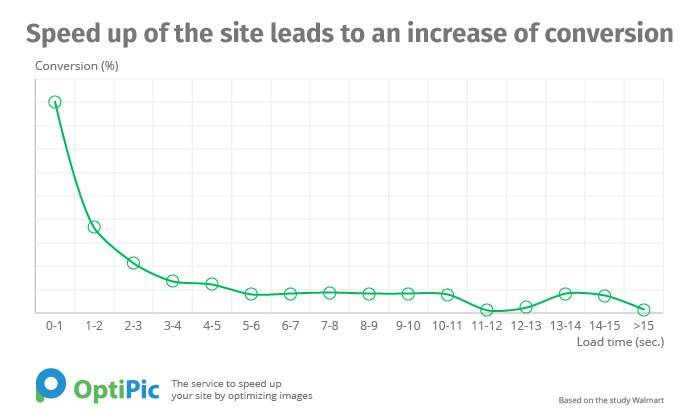
OptiPic-Vorteile
- Es gibt keine monatlichen Zahlungen.
- Vollständige Automatisierung.
- Kostenlose Verbindungsunterstützung.
- Um den Dienst zu verbinden und zu nutzen, benötigen Sie keine besonderen Kenntnisse in der Programmierung oder Administration.
- Es gibt keine Beschränkungen der Bildgröße im System.
- Freundlicher technischer Support.
Wie kann die Optimierung von Bildern für CS-Cart eine Website beschleunigen?
Eine Seite einer Website besteht meistens aus:
- Bilder;
- html-Code (Textinhalt, Layout, Markup);
- Video;
- Javascript-Skripte mit Logik, die vom Browser ausgeführt wird;
- css-Dateien mit Seitenstilen.
Ein solches Element wie ein Bild nimmt den größten Teil des gesamten Volumens auf den Seiten der Website ein und ist der „schwerste“ Teil der Seiten.
Die Reduzierung (Optimierung) von Bildern wird das Herunterladen von Online-Ressourcen zweifellos erheblich beschleunigen.
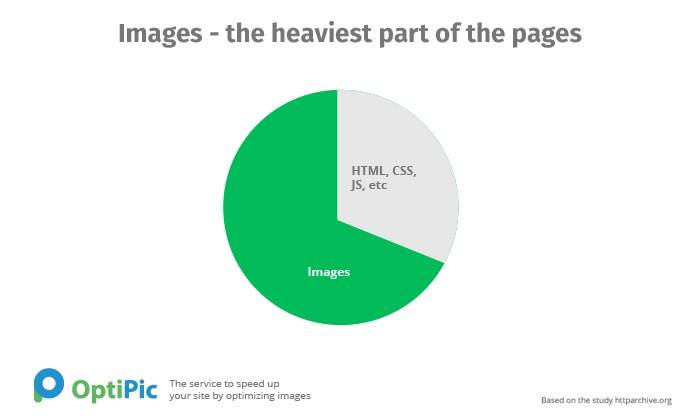
Dementsprechend werden alle Seiten der Site viel schneller geladen, wenn Sie die Größe der Bilder (verringern) ändern.
Die Komprimierung der Bilder auf der Website ermöglicht es, ihr Volumen auf 75-98% zu reduzieren, ohne ihre visuelle Qualität zu verlieren.
Mit fortschreitender Technologie wird die Verwendung des WebP-Formats für Bilder immer häufiger. Dieses von Google entwickelte Format ermöglicht es Webmastern, hochwertige Bilder hochzuladen, die kompakt in der Größe sind und somit einfacher auf Laptops oder Smartphones angesehen werden können, nicht nur im Browser.
Bilder können die Ladezeit einer Website erheblich verlangsamen und auch zu höheren Hosting-Kosten führen. Viele Website-Besitzer mussten die Bildqualität zugunsten schnellerer Ladezeiten opfern. Während klassische JPEGs und PNGs beliebte Optionen sind, haben sie beide ihre Nachteile - JPEGs können oft zu schlechter Grafik führen, während PNGs sehr groß sind.
WebP hingegen bietet das perfekte Gleichgewicht zwischen Dateigröße und Qualität. Vor über einem Jahrzehnt entwickelt, wurde es auf vielen Google-Diensten getestet und als effektiv erwiesen. Google PageSpeed Insights empfiehlt sogar die Verwendung von WebP gegenüber älteren Bildformaten wie PNG und JPEG, um die Ladezeit der Website zu beschleunigen.
Einige weniger verbreitete Browser haben jedoch möglicherweise Probleme beim Anzeigen von Bildern in diesem Format. Um dies zu vermeiden, können Website-Besitzer sicherstellen, dass Bilder in solchen Fällen in den üblichen schweren Formaten angezeigt werden. Die Browserkompatibilität kann auch durch bestimmte Algorithmen oder spezielle Plugins erreicht werden.
Das Konvertieren alter PNG/JPEG-Formate in WebP ist einfach, aber das Konvertieren aller Bilder auf einer bereits erstellten Website kann eine Herausforderung sein. Glücklicherweise gibt es viele Dienstprogramme und Plugins, die den Prozess automatisieren. Eine der besten Optionen ist OptiPic CDN, das nicht nur Bilder in WebP konvertiert, sondern auch die Last auf dem Website-Hosting reduziert, indem zusätzliches Caching und Optimierung durchgeführt wird, um die Rückgabe von Bildern zu beschleunigen.
- Um OptiPic CDN zu verwenden, laden Sie einfach das Plugin für CS-Cart auf Ihrer Website herunter und installieren Sie es.
- Das Plugin konvertiert und liefert WebP-Dateien an Benutzer aus, wenn der Browser dieses Format unterstützt, und gibt eine komprimierte Version eines Bildes im alten Format zurück, wenn der Browser des Benutzers WebP in CS-Cart nicht unterstützt.
- Es passt auch Bilder an schmale Telefonschirme an und führt Caching für beschleunigtes Laden von Bildern durch.
Insgesamt
Obwohl einige zögern, neue Technologien zu übernehmen, sind die Vorteile der Verwendung von WebP für Bilder klar. Mit Hilfe von Plugins wie OptiPic CDN können Website-Besitzer ihre Bilder einfach optimieren und die Ladezeit ihrer Websites verbessern.
WebP ist ein revolutionäres Bildformat, das von Google entwickelt wurde und Webentwicklern und Benutzern gleichermaßen eine Vielzahl von Vorteilen bietet. Hier sind nur einige der Vorteile von WebP:
- Kleinere Dateigröße: Mit einer Dateigröße, die in der Regel um 25-34% kleiner ist als JPEG- und PNG-Bilder derselben Qualität, laden WebP-Bilder schneller und verbrauchen weniger Bandbreite.
- Verbesserte Bildqualität: WebP verwendet fortschrittliche Kompressionstechniken, die die Bildqualität erhalten, während die Dateigröße reduziert wird, was zu Bildern führt, die besser aussehen als JPEG- oder PNG-Bilder derselben Größe.
- Unterstützt Transparenz: WebP unterstützt sowohl verlustbehaftete als auch verlustfreie Transparenz, was es zu einem vielseitigen Format für Bilder mit transparentem Hintergrund macht.
- Weitreichende Browser-Unterstützung: WebP wird von den meisten modernen Browsern unterstützt, einschließlich Google Chrome, Firefox und Microsoft Edge. Es kann auch leicht in andere Bildformate konvertiert werden, um die Kompatibilität mit älteren Browsern zu gewährleisten.
Warum hat Google WebP als Open Source veröffentlicht? Durch die Freigabe von WebP als Open Source ermutigt Google Entwickler, zum Projekt beizutragen und das Format im Laufe der Zeit zu verbessern. Dies führt zu einem effizienteren und schnelleren Bildformat für das Web, mit schnelleren Ladezeiten für Websites und einer besseren Benutzererfahrung für Besucher.
WebP unterstützt sogar sowohl progressives als auch interlaced Display, was schnelles Laden von niedrig aufgelösten oder groben Versionen von Bildern ermöglicht, während höhere Auflösung oder feinere Details im Hintergrund geladen werden.
Und wenn Sie nach einer Möglichkeit suchen, Bilder ohne Datenverlust oder Qualitätsverlust zu komprimieren, brauchen Sie nicht weiter zu suchen als Lossless WebP. Diese Art von Bildformat verwendet WebP-Technologie, um Bilder ohne Verlust von Details zu komprimieren, was es zu einem effizienten Format für die Speicherung und Freigabe von hochdetaillierten Bildern wie Fotografien oder Grafiken mit Text macht.
Andererseits verwendet Lossy WebP verlustbehaftete Kompressionstechniken, um die Größe einer Bilddatei zu reduzieren, was es perfekt für Bilder macht, die keine hohen Detail- oder Klarheitsstufen erfordern, wie z.B. Miniaturansichten oder Hintergrundbilder.
Tatsächlich übertrifft WebP (verlustbehaftet) sogar JPEG dank seiner fortschrittlichen Vorhersagecodierung, blockadaptiven Quantisierung, Filterung und booleschen arithmetischen Kodierung, was im Vergleich zur Huffman-Kodierung eine 5%-10% bessere Kompression bietet.
Mit all diesen Vorteilen und mehr ist es klar, dass WebP die Zukunft der Bildformate für das Web ist.
Das gekaufte Paket brennt am Ende des Monats nicht aus - es ist von Vorteil, es mehrere Monate im Voraus zu kaufen




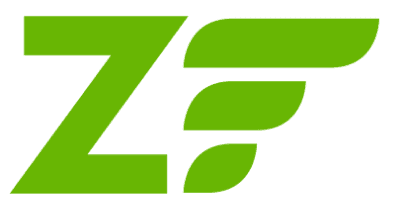 Zend Framework
Zend Framework 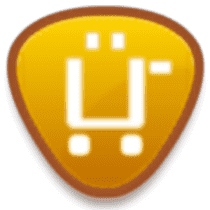 Ubercart
Ubercart  Magento
Magento 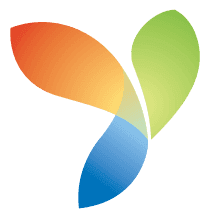 Yii
Yii  Simpla
Simpla  1С-Битрикс
1С-Битрикс